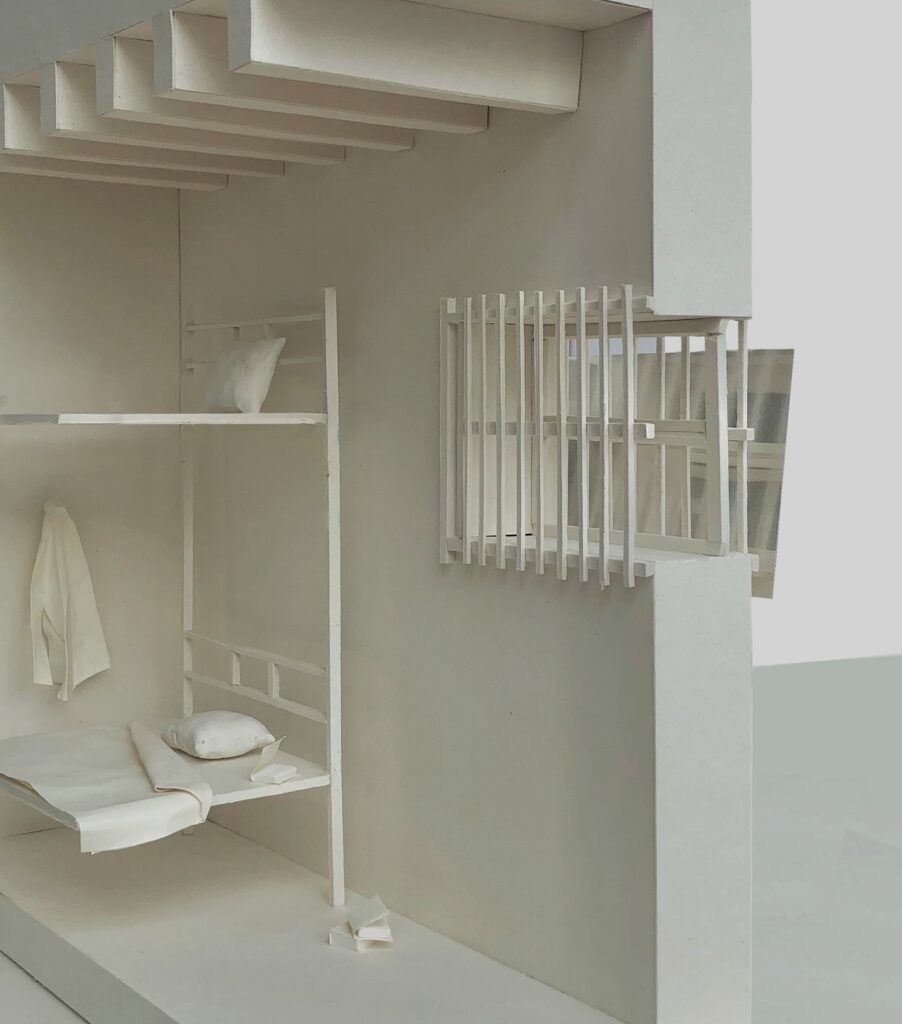
Trauma Studies, the scholarship analysing representations of disruptive experiences and their effect on identity and memory, is a field largely marked by language-based discourses. In examining the psychological and social factors that influence the comprehension of a traumatic experience, much attention has been paid to how such experience shapes and is shaped by language. However, in the last 25 years, scholars have questioned the tool of language, considering it to be insufficient when invoking experiences that profoundly impact the emotional organization. Remarkably enough, this debate on the limits of language did not lead to substantial attention to the spatial dimension of traumatic realities. The project addresses this lacuna by developing the following question: How can the discipline of architecture through its distinct modes of perception and spatial organization, as well as its tangible artefacts such as maps, plans, sections, models, sketches, and installations, help create a much-needed spatial turn in trauma studies? By redirecting attention to the two crucial decades preceding the 1998 Kosovo War, the project focuses on three sites of terror which will offer insights into how trauma ruptures meaning. Obtaining this innovative knowledge will enable two primary objectives: Firstly, the development of a transferable methodological framework for spatially investigating traumatic experiences, and secondly, the attestation of (yet) undocumented micro-histories, essential in refocusing Kosovo’s history.
